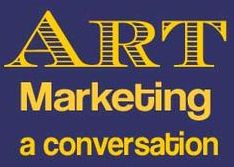
As mentioned in the provocative article, The Visual Artist’s Challenge – Should Artists Work with Galleries, Go Direct to Collectors or Both?, art marketing expert and fellow art blogger, Barney Davey, and I both agreed on a strategy that incorporates a healthy combination of gallery representation and self promotion.
But how does the artist balance promoting oneself while maintaining a successful business relationship with his or her galleries? To bring balance to this conversation, we asked Jason Horejs to participate. He is the owner of a successful gallery in Scottsdale, Arizona and the author of “Starving” to Successful: The Fine Artist’s Guide to Getting into Galleries.
Lori: I have personally proven that Social Media is the quickest way to build brand recognition for you and your art business. Galleries and artists can learn to harness the power of Social Media to gain free exposure and free marketing opportunities which can broaden their collector base like never before.
The statistics are compelling regarding the outreach of Social Media. Here are just a few stats that really caught my attention:
Years to Reach 50 millions Users:
- Radio (38 Years),
- TV (13 Years), Internet (4 Years), iPod (3 Years)…
- Facebook added 100 million users in less than 9 months…
- iPhone applications hit 1 billion in 9 months
- If Facebook was a country it would be the world’s 4th largest between the United States and Indonesia!
Barney: Lori, your story sets a fine example for other artists on how they can leverage Social Media to help them gain awareness and, more importantly, find new customers. That you have been able to do this without shredding your long-term relationships with your galleries is both commendable and instructional.
It was my belief before the advent of the Social Media phenomenon that self-promotion was the primary job of the artist. Yes, there are cases of art dealers and promoters who have driven an artist’s success, but they are few compared to the thousands of artists who are on their own when it comes to gaining recognition.
The trick, in my opinion, is to use the leverage that comes with recognition to build a stronger base with galleries who can appreciate when an artist brings in a loyal following. These things, of course, do not happen overnight just because you get a Facebook Fan Page going. But, if an artist is diligent about building a strong database of bothtraditional mail and email addresses it can be used to the benefit of both artists and galleries.
Jason: This is timely discussion and raises the greatest challenge that has faced the gallery industry in decades. How to remain relevant in Web 2.0 world? I believe the art industry is in the midst of a huge revolution similar in many ways to what has happened in the music industry, and to what is now happening in the publishing industry. An interested buyer no longer needs to go through a traditional middleman, but can buy directly from the source.
It’s an exciting time to be an artist with the prospect of being able to connect directly to collectors, and, frankly, it’s a bit of a terrifying time to own a gallery and face the prospect of ever-increasing expenses juxtaposed against the threat of your traditional buyers circumventing you to buy directly from the artist. I hear much bemoaning about their fate among fellow gallery owners.
Nevertheless, it is interesting to observe what has happened to the music and publishing industries. Have the middlemen (music labels and publishers) been cut out of the loop? Perhaps they have to a degree. Does that mean there are no more middle men in either business? Not at all . . . there are just new middlemen, primarily in the form of Apple and Amazon.
The challenge for musicians, writers, and artists, is that potential buyers don’t want to go through all of the work of becoming editors, music purveyors, or galleries. There’s simply too much variety available through the web, and the social media . . . too much noise. Therein is the opportunity for galleries to cut the noise and be the arbiters of taste and talent. Not unlike the traditional role in that way, but very different in other ways, including relationships and arrangements with artists.
Galleries are going to have to change the way they operate to continue to survive in a world where collectors can discover the art in the gallery, then go directly to the artist to buy. We’ve already started to see more draconian contracts that limit an artist’s activity online. I predict you will also see a rise in the number of galleries that are charging artists to display their work.
So where does that leave the artist today? They are in a bit of a difficult position. I agree with Barney and Lori – self promotion and networking are critical to building a long-term success, and if done correctly, can create life-long fans for themselves and their work. The artist’s challenge is doing it in a way that won’t create perceived conflicts with the galleries they want to work with. If artists couch self promotion to benefit both their galleries and themselves, they can succeed. The best route for artists is to openly communicate their plans so they do not step on their gallery’s toes.
Finally, in my extensive contact with artists around the country, I find very few who are successfully selling their work based solely on their Web promotion and social media contacts. It appears those who have succeeded solely online have come from galleries where they have already established a large collector base – in other words they have leveraged the work the galleries have done to build their careers. I would love to hear stories from artists who have established successful careers and are selling their work extensively, never having worked with galleries.
Lori: It is important for me to maintain a happy relationship with my galleries. My self-promotional strategy strives to benefit my galleries and me. Most importantly, my promotional campaign has not focused on sales, (I really do leave the majority of that to my galleries) but rather on personal branding.
Here are a few examples:
YouTube, Twitter & Facebook:Recently, I have been making YouTube videos of my paintings in progress or as tutorials. When I finish a video, I post it on my blog, website, Twitter and Facebook. I also send the finished video to the gallery where the relevant painting is on display. My galleries are using these videos as a promotional tool for interested collectors. I also ‘tweet’ and post images of new works on Twitter and Facebook.
I have sold some small paintings through the Twitter auction, @140hrs. These were 6×8 paintings that had already been through my galleries and remained ‘homeless’.
Blog/Website/Newsletter: As a working artist who shares art marketing and fine art tips, it is important for me to put my money where my mouth is. Therefore, I also use my blog, personal art website and newsletter to share news from my studio. When I announce a new painting, I always link back to the gallery that is representing the piece. I also share articles about my gallery openings as a learning tool.
My available paintings link to the gallery where it is hanging. When a prospective client contacts me directly and is interested in a painting from my website, I send them to the gallery where that particular piece is available.
Because of my presence on Social Media, I have been asked to work as a hostess for Plum TV, Sun Valley. I am using this opportunity to promote my Sun Valley gallery.
I have found that an open dialog between the artist and gallery is the best way to maintain a healthy working relationship.
Barney: While I do not think galleries will ever go away, I believe they will continue to change their business model to stay relevant and profitable. However, selling direct to customers in a retail environment will remain constant. I envision galleries getting online and using social media to develop their own followers, friends and far flung collectors. You will see them helping artists sell by putting up a virtual gallery, as Jason has. His online gallery extends the artist’s’ influence, reach and offerings beyond what a brick and mortar setting can produce. A natural spin off for galleries would be to work with artists and giclée printers to become boutique publishers of digital fine art prints available only through them. Surely, other creative ideas from artists and galleries will develop as we move through these changing times.
The plans and actions Lori describes above are those of a smart ethical marketer who understands the value of supporting her galleries. Still, I could see her creating a line to be sold direct. This would be work that did not compete with her galleries, but rather would generate interest and drive traffic to galleries where originals or very limited editions were exclusively available.
Having the ability to earn some direct income could offset some of the costs of the larger role in marketing we suggest artists take. The way I see it if there is trust and respect then new opportunities will arise. Otherwise things will devolve to an each person for themselves situation which can only wreak havoc and chaos. I believe it is far more likely these challenging circumstances will create a survival of the species mentality leading to what Stephen Covey calls “interdependence.” This is a balance point where great results derive from a synergy created by open communication and positive interaction from independent parties with common goals.
Lori: Barney and I appreciate Jason joining in on this conversation. As a gallery owner, art marketing expert, book author, and the son of a full time fine artist, Jason brings a unique perspective to this ‘timely discussion that raises the greatest challenge that has faced the gallery industry in decades.’ I found his analogy between the music and art industries very thought provoking.
Social Media is a two edged sword which has also increased the sense of competition between artists. Now collectors can easily compare and contrast artists with only a click of a button. This coupled with the ever-increasing expenses artists must also absorb, leads me to believe that the idea of ‘charging artists to display their work’ will backfire on galleries.
Barney’s suggestions of ‘interdependence’ and ‘coopetition’ are important ideas to keep in mind as artists and galleries attempt to navigate through these uncharted waters while keeping the line of communication open and honest.
Stay Tuned: Our last installment to this conversation to be announced! 3 Tips for Artists to Promote Themselves and Their Galleries




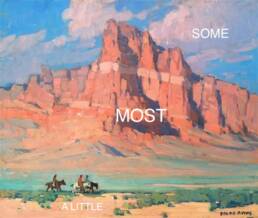
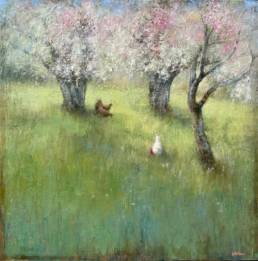
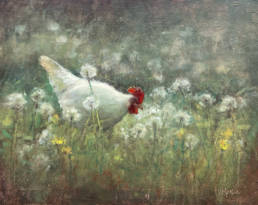
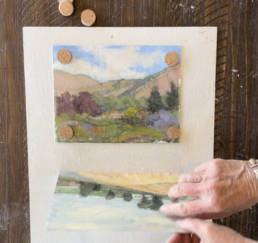
There’s no doubt that it’s of great value for an artist to have some presence in galleries. Many collectors want to know that an artist has gallery representation – it means something to them.
Galleries are going to have to start evolving,though.
There are many dinosaurs out there. You see them in the newspaper industry and the publishing industry. They are resisting the massive changes taking place. And for that reason alone they will die. Same goes for galleries.
There is a huge shift in how artwork is being sold. The savvy artists have taken control of their art sales and they are doing very well with it. The galleries that embrace the internet and self-promotion of artists, and who learn how to work with the artists rather than resist what’s happening, will do best.
It is possible for artists to sell both through a gallery and online. There are guidelines to follow and agree to for it to work amicably. As an example, it’s in an artist’s best interest to help their gallery produce more sales of their work. At the same time, an artist should have complete freedom to build up their collector base, to be in touch with all of their collectors, and to have control over their own career.
Maria,
I really appreciate your thoughtful and insightful comment. This has been a very interesting conversation and I believe a useful post for artists and galleries alike. The feedback from the readers adds an important perspective as well.
We all feel the huge shift taking place and I also feel it resembles the print industry. Many publications have not made it, but others are thriving with new business models that embrace technology. In your last paragraph you mentioned ‘guidelines’ to follow and agree for artists and galleries to work amicably. If you have some specifics in mind, it would be great for you to share them here at FineArtTips in a guest post!
Thanks again for the comment and visit to this site-
Lori
Hi Lori!
I too, don’t think galleries will ever go away. I certainly hope not! The energy and excitement of opening night are among some of my favorite moments in my own art-creating process. Having the opportunity for direct feedback from your patrons is simply too valuable for me personally and after a show, I feel a new level of creative need to get back in front of a canvas simply from feeding off the “vibes” of each person coming to see what is newly created and shown in the art world.
I have sold my paintings extremely well through Twitter and Social media without focusing at all on the actual selling part and having the exposure of such a large following has increased not only my sales & pre-existing internationally-collected status as an artist, but my credibility overall. I just recently won a large corporate sculpture commission (at least partially) due to the fact that I was well known in my online presence. In the past, (not currently offering them now), I taught Twitter classes through a live seminar and recorded teleclasses to help other people brand themselves and find like-minded new friends and possible lovers of their particular style of art or whatever makes them happy & feel successful. If you meet me in person, I light up with the possibility of talking about not only art but Social Media! I just left my 16-yr career in the corporate world of advertising and branding this past Feb. to allow me more time for my artwork and accepted a position doing Social Media consulting for small to mid-size companies on the side. Talk about benefiting from web 2.0! Now I can work when I want (at least partially) and create when I feel inspired – no matter when they happen.
I find one of the best benefits for me of being a Social Media maven is that I tend to be alone much of the time in my studio and if I need a hit of interaction or support, I just jump online and voilà, instant love! In my main Twitter ID, I send out mostly spiritual, Law of Attraction and personal communications, but I also have a separate completely art-focused identity to share that side of myself at length. I even have my very-minor-celebrity dogs online to give the big kid in me a place to come out and play silly sometimes. I think it all helps my customers know the true person who has created their artwork and adds more value in many intangible ways.
I don’t and wouldn’t do anything to impede or hurt my beloved galleries since they have allowed me to grow and flourish as an artist, but I find a combination of Social Media AND in-person gallery exposure well balanced is not only a real winner for me, but a necessity as an artist and as a human being. I want to share me with the world, good/bad/creative/inspirational/silly, it all makes me the artist of many colors that I am.
♥♥♥
Alissa Fereday
Hey! Come chat with me at:
http://twitter.com/AlissaFereday
http://www.linkedin.com/in/alissafereday
http://www.facebook.com/alissa.fereday
my silly dogs:
http://twitter.com/chiliconqueso
art only:
http://twitter.com/itweetart
Hello Alissa!
What a great comment. In fact I might use it as a post in the near future for those readers who don’t read all the comments. I really appreciate your feedback and personal story. You are a strong force for artists on Social Media and it would be very interesting to hear how you specifically sell your art using the new media.
I too enjoy the friendships and comoradery that I have from using Twitter and Facebook. Being an artist is a lonely professiona at times and now we are all connected more easily with like-minded individuals. I really am glad you and I have met there and appreciate your useful comment.
Thanks and keep in touch! Lori 🙂
Really fantastic article Lori!! I am so impressed by the thought that research that went onto this post. It is exciting to be an open minded artist in these changing times. My art and marketing are unique in that I paint mostly miniatures, 3.5″x 2.5″. In my experience, galleries find it hard to successfully carry my paintings. Consequently all of my sales and promotion are via the internet! I am also most comfortable with the internet as my avenue of sales. I agree that galleries will need to change AND artists will need to adapt so that we avoid the “everyman for himself”. I hope to see more virtual galleries, I would certainly hop on board if I were to encounter one.
Thanks again for this great blog post.
~Melody Lea Lamb
Hi Melody, it’s great to see you here! Thanks of the comment which is very helpful. Obviously you and I ‘know’ each other via Social Media. Melody, it is wonderful how you have created your own niche within the art market place. I would love to hear how you use the internet for sale and promotion so I can share your story with my readers…think about it!
Best-
Lori 🙂
I have to say that this has been one busy year learning all this socialmedia stuff. But thanks to many of your tips you have written about I have been doing a lot of self promoting. I started a FaceBookFan page, a blog, twitter and even just finished setting up an ETSY page for my prints.(I already had a web site) My goal has been to eventually get into a Gallery, and therefore have NOT posted prices of my paintings (originals)But for now, I have been getting everything set up to move in that direction. I am hoping however to have a balance with what, where and how things are sold in galleries. I am hoping to be able to sell small works on my own and larger works through galleries. I am in the process of listening to Jason Horjes through http://www.smARTist.com. on what to say and NOT say to present yourself to a gallery. It has been VERY informative and I hope to be ready to present to a gallery soon! I have to say, self promoting looks like it will not go away whether we are presented by a gallery or not. I am overwhelmed at times about how long it all takes, but I am confident that with time I will get quicker with the socialmedia and spend more time in the studio! Lori, Thanks for bringing so much information to other artists like myself! You are awesome. 😉
Hello Dee –
Somehow your wonderful comment slipped through the cracks and I just noticed it while re-reading this great comment thread.
Dee, thanks for sharing your story and successes here. I am so happy to hear that I have helped in some small way. It sounds like good things are really happening for you and I am sure your will find the gallery to suit you when the time is right!
Many thanks for the comment and feedback!
My best-
Lori
Hi again Lori!
In response to your request for a few internet selling tips, I am including a link to my recent blog post “The Power Of Twitter For Artists”:
http://melodylamb.blogspot.com/2010/03/power-of-twitter.html
One of the most powerful things I’ve found as an artist who sells mainly via the internet, is that I have very little hesitance, trepidation, or insecurity self promoting online! Since there is no gallery owner to say “I’m sorry you work is not (fill in the blank) to fit our needs” I can reach out and self promote with no holds barred, and I do! Here are a few more tips I have for selling art online:
Best selling venues:
Etsy
Art Fire
Bonnanzle
Zazzle
Cafe Press
Red Bubble
I used to do well on eBay, but am nearly removed from that venue. The level of “fake” art, the fees and the slump in traffic there leads me to suggest you steer clear of “FeeBay”
Next, opening accounts at any of these selling venues is not enough, you have to “work them”. Which means, keep them fresh, add new work, promote the heck out of your shops there. That is where social networking comes into play. I personally delight in interacting with my customers and potential customers on Twitter and through my blog. It really should be fun otherwise it will become a huge chore!
Speaking of Blogs, I highly recommend having one that you post to at least once a week, preferably 2-3 times per week. Search engines love blogs because the information is fresh. Just remember to give it time, be patient. The traffic and customers will come if you keep at it consistently.
“Keep producing, promoting, and refining your art business, then find your niche in this changing economy!”
Thanks for this opportunity Lori.
~Melody Lea Lamb
Hi Melody-
Thanks for this great follow up comment. I plan to use parts of it in an upcoming post. Not everyone reads comments and I want my readers to see what you’ve been up to!
Best – Lori 🙂
I’m pretty impressed with your sites content, good work.. keep it up..
Thank you for taking time to let me know you are enjoying this blog!
Lori 🙂
Lori – this article and part 1 of the post on Barney Davey’s blog have been very informative and interesting. I find that a huge number of artist’s who have enthusiastically embraced this new way to self promote and sell their artwork themselves are younger artists and artists who have worked in the corporate world. We are no longer content to play by the “old” rules and will break free and do it our way – 100% in control of their businesses. We will partner with other business – business arrangements built on honor and respect and that will mutually benefit both parties.
One thing however that disturbs me was Jason’s statement: “Therein is the opportunity for galleries to cut the noise and be the arbiters of taste and talent”. Right after he said that things are changing in the industry?
“The Arbiters of Taste & Talent”? Really Jason? I find this quite presumptuous and it smacks of elitism. Who decreed that Gallery owners were the ones to decide which artists have talent and what is tasteful? OLD WAY OF THINKING! Another myth that needs to be brought down. This snobby point of view is one of the reasons that artists are fed up and looking to represent themselves. The other day when I met you Jason, you did not come across this way, that is why I am shocked at your statement. Especially when I see how you are changing your gallery’s business model.
Jason is one of the very few gallery owners that is embracing this seachange and trying different ways to evolve his business by finding a way to include artists who do not want typical gallery representation. He wants to create a true partnership with his Studio artists. I really respect him for that.
Thanks Lori, I love your blog look forward to each of your blogs.
Hello Fiona and thank your for the thoughtful comment. Yes, I can see how that statement was a bit ‘off putting’…but, like you, I have met Jason in person and he is a warm individual. Now that you have pointed this out to me, I am curious and would like him to elaborate myself :)…I will try and get him to reply here. Nevertheless, kudos to Jason for embracing this new a progressive art business.
Best-
Lori
Grr no edit button when you need one LOL! I should have said I look forward to each of your posts!